High-Tech Low-Life in Long-Lived Short-‘Shades: Two Classic Cyberpunk Anthologies
After reading William Gibson’s Neuromancer, the “quintessential cyberpunk novel” (as Bruce Sterling calls it), earlier this year (see RSF#3), and James R. Strickland’s more recent “post-cyberpunk” Looking Glass last month (see RSF#6), I got the itch to revisit some of the classic cyberpunk writers from the Eighties. I found two anthologies which together provide an excellent introduction and overview of the genre: Mirroshades: The Cyberpunk Anthology, edited by Bruce Sterling (henceforth abbreviated MtCA), and Storming the Reality Studio: A Casebook of Cyberpunk and Postmodern Fiction, edited by Larry McCafferey (henceforth abbreviated StRS). Both are well-worth a read (or even a re-read, in my case).
Sterling published his anthology in media res, that is, during the heyday of the cyberpunk movement (1986), and thus is representative of the genre as authors perceived it at the time. McCafferey’s anthology is more of a literary retrospective, with the advantage of some hindsight situated several years later (1991). McCafferey’s casebook thus analyzes the genre a little more critically, traces it roots, exemplifies its themes, and compares it to and situates it within the “mainstream” postmodern movement as a whole. While MtCA contains only fiction (with the exception of Sterling’s insightful “Preface”), StRS provides a number of nonfiction pieces as well, including interviews, literary criticism, and philosophical discussions of both cyberpunk and postmodernism (even including a reprint of Sterling’s “Preface” for its historical influence in defining the movement). Also included is an annotated chronological list of sixty-two works (books, movies, music, and other media) which “helped to shape the cyberpunk ideology and aesthetics” (Richard Kadrey and Larry McCafferey’s “Cyberpunk 101” in StRS). While there is much overlap in authors in the two anthologies – indeed, all but two of Sterling’s chosen writers also appear in McCafferey’s anthology – only two selections are duplicated: Bruce Sterling’s “Preface” and Pat Cadigan’s “Rock On.” (And those two are certainly worth duplicating.)
In his “Preface” (MtCA & StRS) Bruce Sterling lists several labels which were attached to this scifi subgenre. Such labels included “Radical Hard SF, the Outlaw Technologists, the Eighties Wave, the Neuromantics, the Mirrorshades Group.” ‘Cyberpunk’ is the label which stuck. I contend this is because the term’s two roots nicely capture two central ideas which are juxtaposed, analyzed, and synthesized in cyberpunk literature. Pretty much all of cyberpunk’s recurring and defining themes can be loosely categorized into one of these two aspects: ‘cyber’ and ‘punk.’
As Timothy Leary points out in his essay “The Cyberpunk” (StRS), the term ‘cyber’ comes originally from the Greek kubernetes, meaning “pilot.” The scientist Norbert Weiner adapted this term in coining the word “cybernetics” to delineate the “entire field of control and communication theory, whether in the machine or in the animal.” So part of the ‘cyber’ in cyberpunk has to do with communication and control. Indeed, many cyberpunk writers highlight how the flow of information in a media-saturated society can be used by individuals, groups, corporations, and governments to manipulate governments, corporations, groups, and individuals. And as information technology continues to advance, such control will become more subtle and yet more pervasive. Some examples: In Pat Cadigan’s “Rock On (MtCA & StRS) Man O’War’s conglomerate is able to identify, track, buy out, and neutralize Gina’s captors before they even realize they have been noticed, simply by analyzing global music data and marketing trends; Harold Jaffe’s “Max Headroom” (StRS) illustrates how subtle changes in wording of news reports can affect consumers; Ted Mooney’s Easy Travel to Other Planets (excerpt in StRS) posits that information excess can even cause physical harm, such as “bleeding from the nose and ears, vomiting, deliriously disconnected speech, apparent disorientation, and the desire to touch everything.”
Since cybernetics does not distinguish between man and machine, the cyber part of cyberpunk often also includes a blurring of the distinction between man and machine through advanced technology. This can take the form of mechanical or electronic prosthetics, such as the blind Stone’s replacement eyes in Paul Di Filippo’s “Stone Lives” (MtCA); augmentation, such as Molly’s eyes and claws in Gibson’s Neuromancer (excerpted in StRS); or modification like the Mechanists in Sterling’s “Twenty Evocations” (StRS); up to outright replacement of an entire human, as when the deceased Flatline’s personality is reproduced in a virtual construct (also in Neuromancer), or a pure artificial intelligence may even be created, such as Aleph in Tom Maddox’s “Snake-Eyes” (MtCA). The blurring of man and machine is sometimes even stretched so much as to erase the boundaries between physical and mental reality completely, as with Gibson’s ‘cyberspace’ Matrix, John Shirley’s Plateau in “Wolves of the Plateau” (MtCA), and the hooded virtual experience of Marc Laidlaw’s “Office of the Future” (StRS).
The question of what is real is also raised by the reproducibility of images made possible by information technology. Easily reproducible ad inifinitum, photographs begin to stand in for reality – acting like what Jean Badrillard, in “The Automation of the Robot” (StRS) calls ‘simulacra.’ In Don DeLillo’s White Noise (excerpted in StRS), people who go to take photographs of “the most photographed barn in America” never actually see the barn itself, because they are so busy taking photographs of it. “We’re not here to capture an image,” says the character Murray, “We’re here to maintain them….They are taking pictures of taking pictures.” In Sterling and Gibson’s “Red Star, Winter Orbit” (MtCA), memories of videos of a Mars landing have taken the place of the memories of the actual event for Pilot Tajana. She says, “I hardly remember. I’ve seen the tapes so often, now I remember them instead. My memories of Mars are any schoolchild’s.” (One is reminded of the replicants in Blade Runner, themselves a type of simulacra, who collect photographs to reinforce memories of an entirely artificial past.) Reproducible images can even begin to create reality, as a photographer in Gibson’s “The Gernsback Continuum” (MtCA) begins to perceive an alternate world after taking too many photos of 1950’s architecture.
While the ‘cyber’ aspect of cyberpunk includes such high-tech elements which raise ontological questions of what it is to be human, and even what it is to be real, the ‘punk’ aspect brings in an additional set of themes. These are sometimes contradictory, as the word ‘punk’ can suggest both ‘seedy’ and ‘self-reliant,’ and its connotations include avant-garde music, psychotropic drugs, violent crime, and anti-establishment counterculture. All of these find expression in cyberpunk.
Music plays a recurring and often important role in cyberpunk narratives. Author John Shirley, himself a punk rock performer, portrays Rickenharp, a one-time old-school rock star whose unwired performances have become obsolete in the high-tech world of “Freezone” (MtCA). In Cadigan’s “Rock On” (StRS & MtCA) Gina is a ‘sinner,’ a human music synthesizer, able to create music through purely mental collaboration when wired up to the brains of instrumentless musicians. In Sterling and Gibson’s “Red Star, Winter Orbit” (MtCA), a Soviet cosmonaut bootlegs American music from satellite transmissions which he intercepts at his orbital space station.
Mind-altering drugs also play a prominent role, surfacing in almost every example in the genre. The protagonist of James Patrick Kelley’s “Solstice” (MtCA) is a famous ‘drug-artist’, creating designer drugs for mass consumption. Rickenharp in Shirley’s “Freezone” (MtCA) is a recovering ‘blue mesc’ addict. The KGB man in Sterling and Gibson’s “Red Star, Winter Orbit” uses a drug called ‘Fear’ to get his revenge on the man who has cuckolded him. Case pops ‘dex’ in pale pink octagons in Neuromancer (StRS), as a replacement for his addiction to cyberspace which he can no longer access. This pervasive use of psychotropic drugs raises similar questions of mind and reality to those raised by high-tech.
Cyberpunk, in focusing on both the cyber and the punk, is able to milk this fertile intersection of high-tech and low-life. I use the term “low-life” guardedly, and somewhat ironically. I certainly do not mean to imply that the protagonists of cyberpunk are inferior in any way – except in the eyes of the multinational megacorporate establishment. In fact, Leary’s essay (StRS) argues that cyberpunk heroes, in standing up to (or cannily sidestepping) these forces which control and constrain the everyman in our high tech futures (and present), are exactly the sort of heroes we need, people who disregard the rules and think for themselves, rather than walk the line that has been drawn for them, thinking only what they are told to think.
So maybe we need a little more cyberpunk in this postmodern world. If you need a little more, pick up one of these anthologies.
Works Cited:
Baudrillard, Jean (1983) “The Automation of the Robot” in Simulations. Reprinted in McCafferey, Storming the Reality Studio.
Cadigan, Pat (1984), “Rock On” in Light Years and Dark (Berkeley). Reprinted in Sterling, Mirrorshades and McCafferey, Storming the Reality Studio.
DeLillo, Don (1984) White Noise. Excerpt reprinted in McCafferey, Storming the Reality Studio.
Gibson, William (1981), “The Gernsback Continuum” in Universe 11. Reprinted in Sterling, Mirrorshades.
Gibson, William (1986) Neuromancer. Excerpt reprinted in McCafferey, Storming the Reality Studio.
Jaffe, Harold (1988) “Max Headroom” in Mississippi Review 47/48 (1988), pp.130-135. Reprinted in McCafferey, Storming the Reality Studio.
Kadrey, Richard & Larry McCafferey, “Cyberpunk 101: A Schematic Guide to Storming the Reality Studio” in McCafferey, Storming the Reality Studio.
Kelley, James Patrick (1985), “Solstice” in Isaac Asimov’s Science Fiction Magazine, June 1985. Reprinted in Sterling, Mirrorshades.
Laidlaw, Marc (1984) “Office of the Future” from Dad’s Nuke. Reprinted in McCafferey, Storming the Reality Studio.
Leary, Timothy (1988), “The Cyberpunk: The Individual as Reality Pilot” in Mississippi Review 47/48, pp.252-265. Reprinted in McCafferey, Storming the Reality Studio.
Maddox, Tom (1986), “Snake-Eyes” in Omni, April 1986. Reprinted in Sterling, Mirrorshades.
McCaffery, Larry, ed. (1991), Storming the Reality Studio: A Casebook of Cyberpunk and Postmodern Fiction (Durham: Duke University Press).
Mooney, Ted (1981) Easy Travel to Other Planets. Excerpt reprinted in McCafferey, Storming the Reality Studio.
Shirley, John (1985), “Freezone” in Eclipse (Bluejay). Reprinted in Sterling, Mirrorshades.
Shirley, John (1988) “Wolves of the Plateau” in Mississippi Review 47/48, pp.136-50. Reprinted in McCafferey, Storming the Reality Studio.
Sterling, Bruce, ed. (1986), Mirrorshades: The Cyberpunk Anthology (New York: Ace Books).
Sterling, Bruce (1986), “Preface” to Mirrorshades. Reprinted in McCafferey, Storming the Reality Studio.
About the Author: Henry Cribbs somehow managed to sneak his science-fiction poem about Schrödinger’s cat into the literary art journal Lake Effect, and has also published book reviews for Philosophical Psychology, Chicago Literary Review, and Black Warrior Review. He taught philosophy and creative writing at the University of South Carolina for several years, and now forces his high school English students to read Ray Bradbury. He currently serves on the editorial board for Nimrod International Journal of Prose and Poetry.












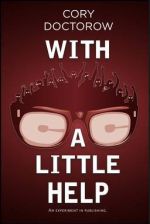
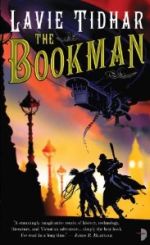
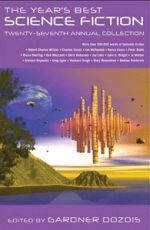
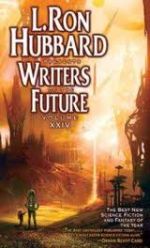
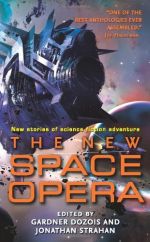

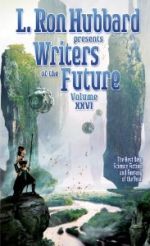
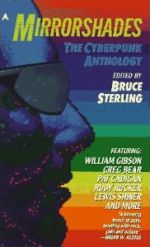
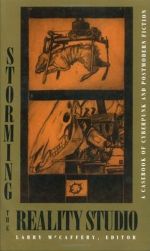



4 comments
[…] High-Tech Low-Life in Long-Lived Short-‘Shades (Coming Soon) by Henry Cribbs Interview An Interview with Dr. Harry Brown by Paul […]
[…] This post was mentioned on Twitter by Bryan Thomas Schmidt, Michael Ray – Editor. Michael Ray – Editor said: Check out Henry Cribbs' new essay on Mirrorshades and Storming the Reality Studio in RSF#7 – http://tinyurl.com/2ad9ezh […]
[…] http://redstonesciencefiction.com/2010/11/cribbs-essay-december2010/ Posted by Blue Tyson 3.5, study, t non-fiction, z free sf Subscribe to RSS feed […]
[…] was reprinted in the cyberpunk anthology Mirrorshades which I had read the month before that (see this column in RSF#7). But that didn’t quite explain the feeling I had, because I had it before I even got to the […]